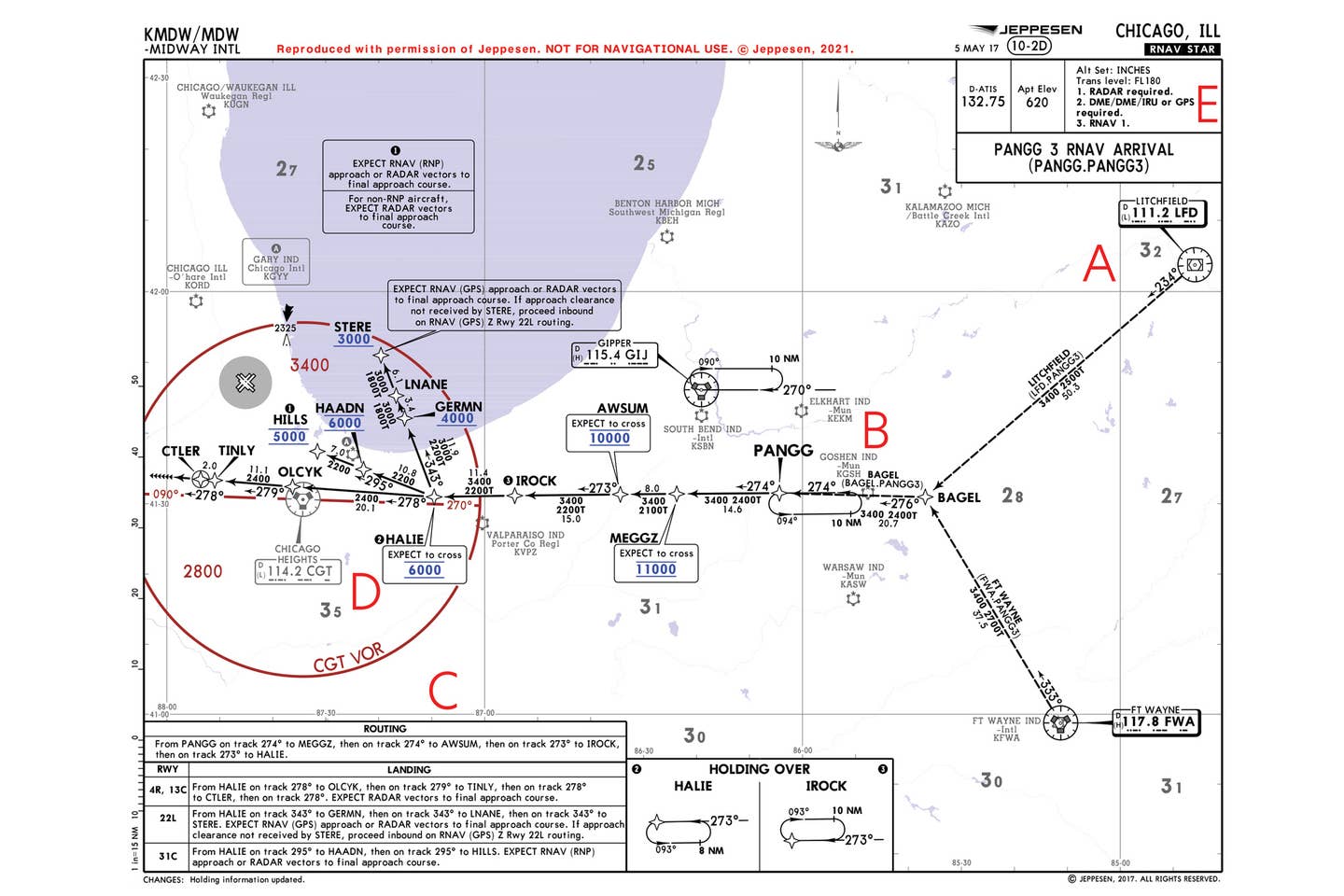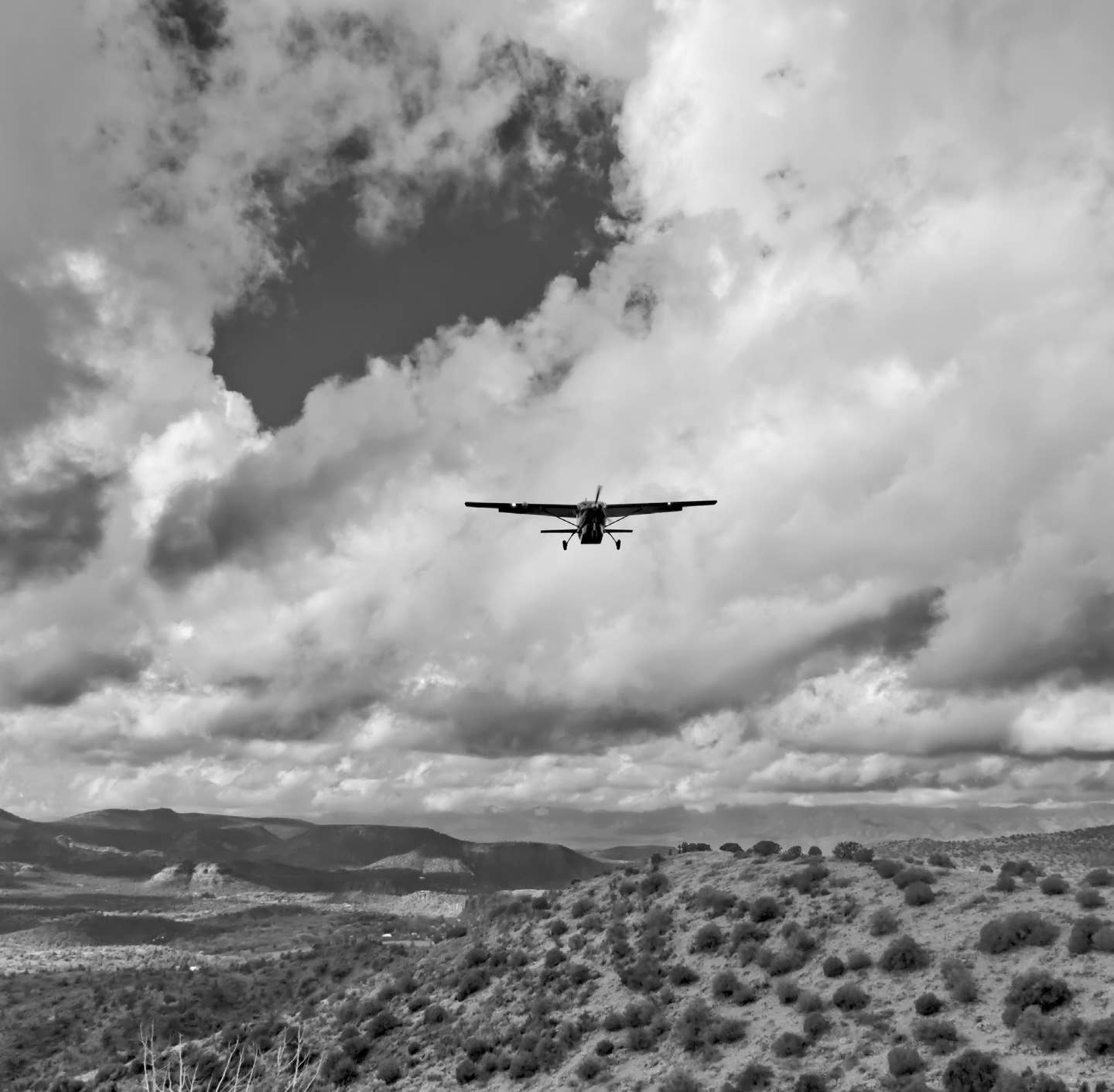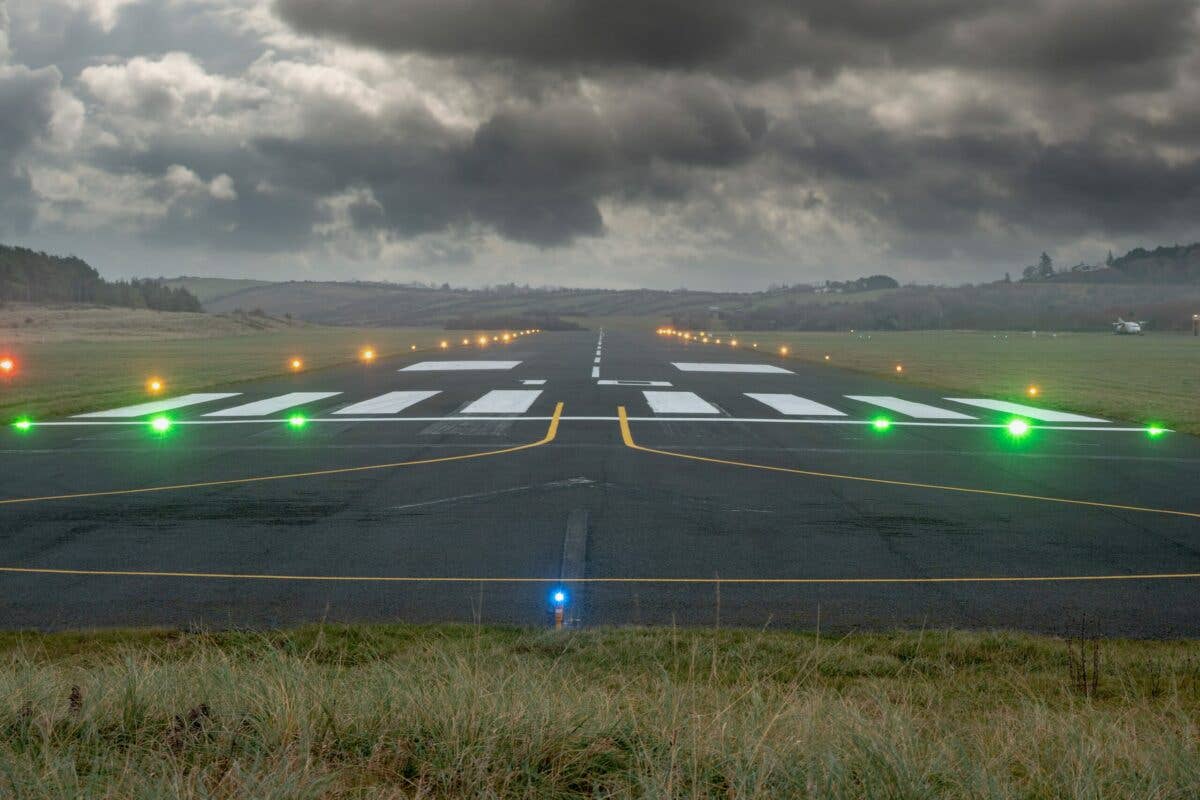
Chicago Midway KMDW PANGG3 (RNAV) Arrival Courtesy Jepessen
Chicago’s Midway International Airport (KMDW) is heavily used by the airlines, business-aviation turbine fleets, and a sizable number of smaller GA transient and training aircraft, especially since the city of Chicago closed nearby Meigs Field (KCGX) some years ago. The PANGG 3 (RNAV) arrival is one of seven at KMDW, and controllers say it’s commonly used for traffic arriving from the east destined for runways 22L and 31C.
This arrival includes a variety of instructions the crew must absorb before entering the Chicago terminal area to be certain everyone understands what’s expected of them. Gathering all the critical data on one chart allows a pilot to sort through the details of this arrival procedure and reduces radio chatter and unnecessary vectoring by ATC.
A. The Beginning
The PANGG 3 offers pilots at least two initial connection points beginning in South Central Michigan (Litchfield, KLFD) and East Central Indiana (Fort Wayne, KFWA). But these are not the only locations on the map where an aircraft might be instructed to join the arrival. ATC might also assign BAGEL or PANGG.
B. Holding Along the Way
When the pace of arrival traffic picks up, aircraft should be prepared to hold at PANGG, HALIE and IROCK intersections. This arrival depicts PANGG and IROCK as holding patterns with 10 nm legs just like the one over the Gipper VOR (GIJ). But pilots will seldom be instructed to hold at GIJ because it’s primarily a departure fix. Note the hold at HALIE has only 8 nm legs.
C. Landing Instructions
There’s plenty of procedural information for arrivals at Midway depending upon which runways the tower’s ATIS is broadcasting on 132.75. All aircraft will initially cross HALIE at 6,000 feet. Aircraft landing, runways 4R or 13C will continue to track the arrival procedure to the CTLER waypoint until radar vectors for an instrument or visual approach are provided. Arrivals headed for Runway 22L will proceed northwest at HALIE to GERMN, then to LNANE and on to STERE, where they can expect radar vectors to the final approach course. Confused yet? If you’re lucky, KMDW will be landing Runway 31C which involves tracking from HALIE to HAADN, then on to HILLS where you will be assigned the approach.
Check out more charts: Chart Wise
D. Hard Altitudes
Note that many of the altitudes listed include a solid line above and beneath the number. That means crossing altitude HALIE at 6,000 feet, for instance, is a requirement—not above or below that altitude unless ATC assigns something else. If most arrivals from the east use the PANGG 3, what happens when slower airplanes find themselves in front of the jets? Chicago Approach will descend you early to allow the jets to pass over you, or they will leave you at 6,000 feet and allow faster traffic to pass beneath you.
E. Three Items of Equipment Required
The box in the upper right corner of this procedure indicates three requirements in order to use this procedure. First, the aircraft must be operating in a radar environment. That means pilots arriving at KMDW when it was “ATC Zero” this past year would not have been using the PANGG 3. ATC Zero turns an airport into a nontowered field. The aircraft must carry DME/DME/IRU or GPS, and it must also be RNAV 1-capable. RNAV 1 is code for an IFR-certified GPS that gives ATC the flexibility to assign a direct clearance to any of the listed waypoints. This arrival procedure matches up nicely with the RNAV (GPS) Z Rwy 22L or RNAV (GPS) Z Rwy 31C. Take a look to see how the PANGG 3 feeds you onto either of these approaches.
This story appeared in the June/July 2021 issue of Flying Magazine

Sign-up for newsletters & special offers!
Get the latest FLYING stories & special offers delivered directly to your inbox



